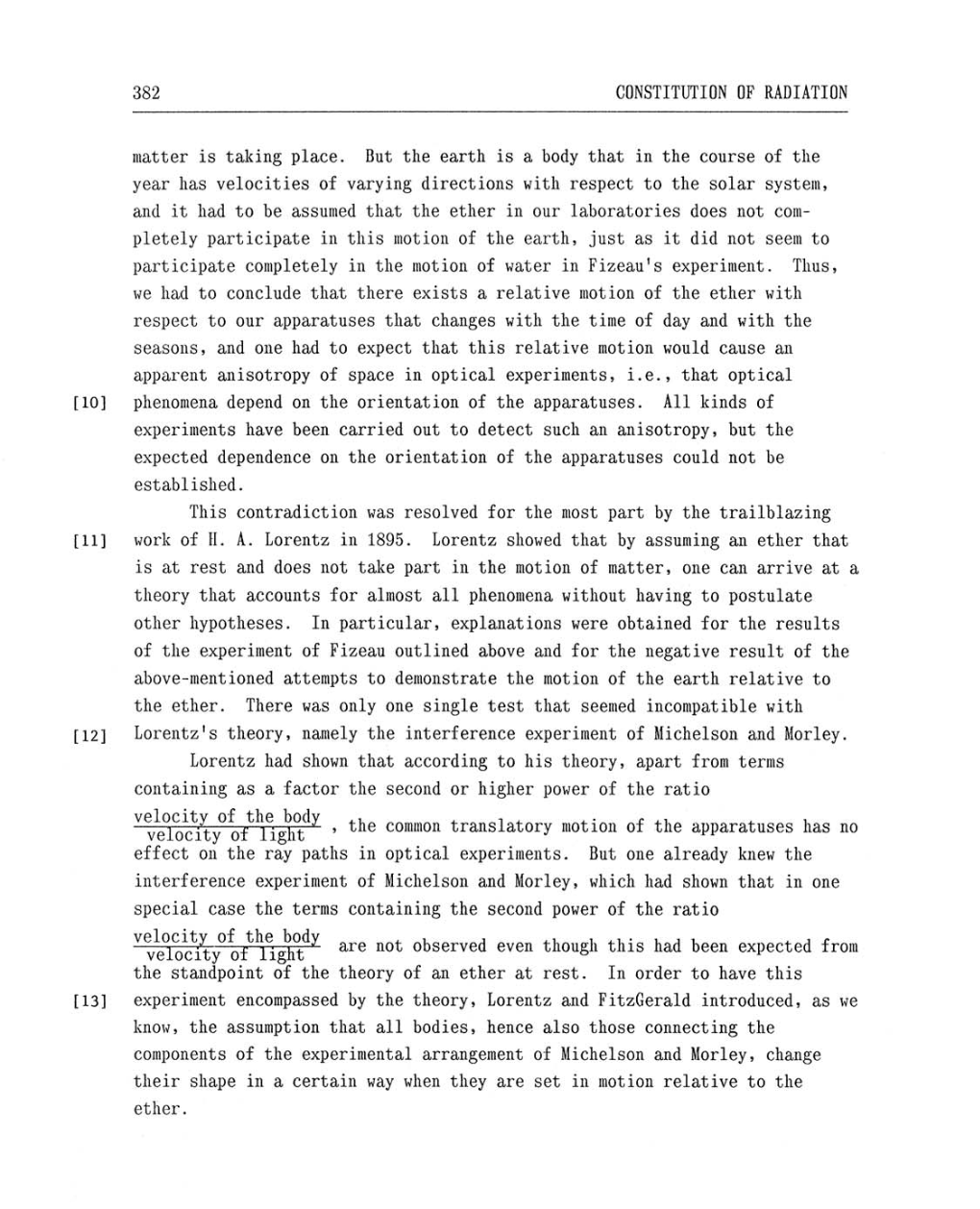382 CONSTITUTION
OF
RADIATION
matter
is
taking place.
But
the earth
is
a body
that
in
the
course
of
the
year
has
velocities
of
varying
directions with
respect
to
the solar
system,
and
it
had
to
be assumed
that the ether in
our
laboratories
does
not
com-
pletely
participate in this
motion of
the earth, just
as
it did
not
seem
to
participate
completely
in the motion
of
water
in
Fizeau's
experiment. Thus,
we
had
to
conclude that there exists
a
relative
motion of
the ether with
respect
to
our
apparatuses
that
changes
with the time
of
day
and
with
the
seasons,
and
one
had to expect
that this relative
motion
would
cause an
apparent anisotropy
of
space
in optical
experiments,
i.e.,
that optical
[10]
phenomena
depend
on
the orientation of
the
apparatuses.
All
kinds
of
experiments have been
carried
out to
detect
such
an
anisotropy,
but the
expected dependence
on
the orientation
of
the
apparatuses
could
not
be
established.
This contradiction
was
resolved for the
most
part
by
the
trailblazing
[11] work
of
H. A.
Lorentz in
1895.
Lorentz
showed
that
by assuming
an
ether that
is
at rest and does not
take part
in
the
motion of
matter,
one
can
arrive
at
a
theory
that
accounts
for
almost
all
phenomena
without
having
to postulate
other
hypotheses.
In
particular,
explanations
were
obtained for the results
of
the
experiment
of
Fizeau outlined
above and
for the
negative
result
of
the
above-mentioned
attempts to
demonstrate the
motion of
the earth relative
to
the ether.
There
was
only
one
single test
that
seemed incompatible
with
[12]
Lorentz's
theory,
namely
the interference
experiment
of Michelson and
Morley.
Lorentz
had
shown
that
according
to
his
theory, apart from terms
containing
as a
factor the
second
or
higher
power
of
the ratio
velocity
of the
body
velocity of light
,
the common
translatory
motion of
the
apparatuses
has
no
effect
on
the
ray
paths
in
optical
experiments. But
one
already knew
the
interference
experiment
of Michelson and
Morley,
which had
shown
that
in
one
special
case
the
terms containing
the
second
power
of
the ratio
velocity
of the
body
are
not
observed
even
though
this
had been
expected
from
velocity
of
light
the
standpoint of
the
theory
of
an
ether
at rest.
In order
to
have
this
[13]
experiment
encompassed
by
the theory, Lorentz
and
FitzGerald
introduced,
as we
know,
the assumption that all
bodies,
hence also
those
connecting
the
components
of the
experimental
arrangement
of
Michelson and
Morley,
change
their
shape
in
a
certain
way
when they
are
set
in
motion
relative
to
the
ether.
